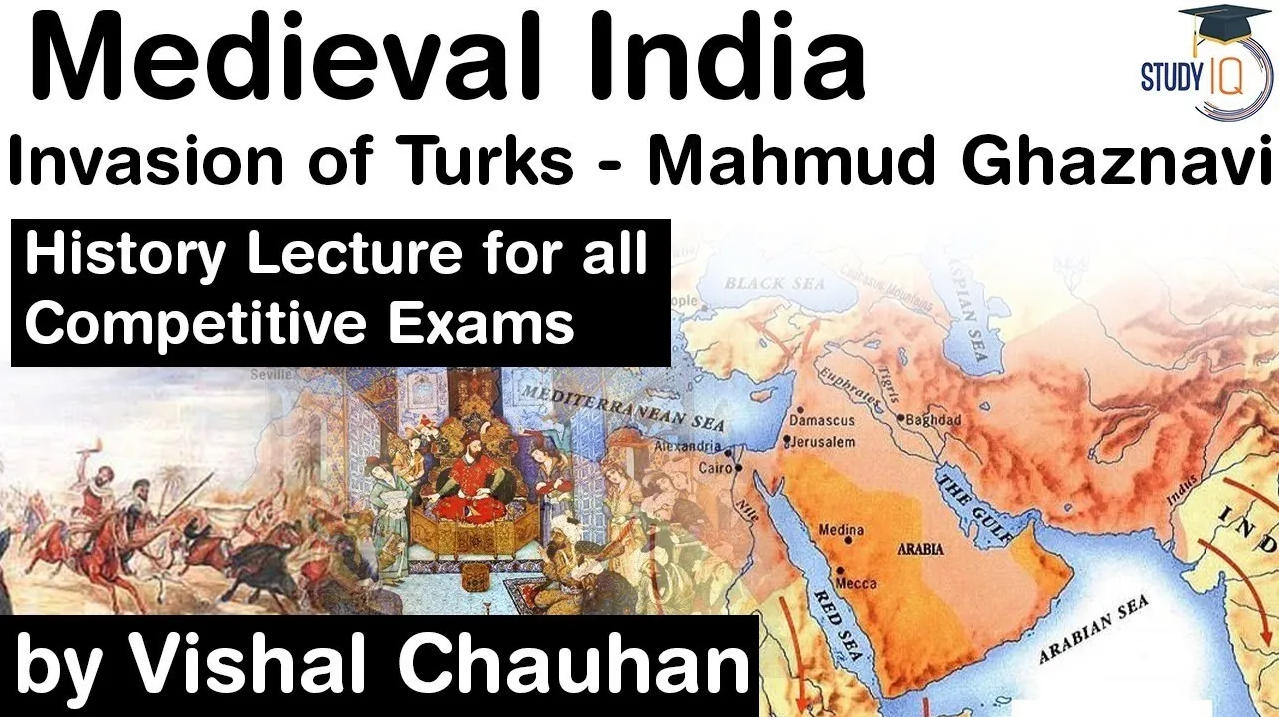Table of Contents
Ghaznavids:
- Ghaznavids(977-1186 CE) was a dynasty of Turkic origin that ruled in Khorasan( in northeastern Iran), Afghanistan, and northwestern India( modern Pakistan).
- The founder of the dynasty was Subuktigin( ruled 977-997), a former Turkic slave who was recognized by the Samaninds(an Iranian Muslim dynasty) as governor of Ghazna (modern day Ghazni, Afghanistan).
- As the Samanind dynasty weekend, Subktigin consolidated his position and expanded his domains as far as the Indian border.
- His son Mahamud( ruled 998-1030) continued the expansionist policy, and by 1005 the Samanid territories had been divided.
- The Oxus River( Amu Darya) form the boundary between the two successors state to the Samanid empire, the Ghaznavids ruling in the West and the Qarakhanids in the East.


Mahmud of Ghazni:
- Ghaznavid power reached its zenith during the Mahmud’s reign.
- He created an empire that stretched from the Oxus to the Indus Valley and the Indian Ocean; in the West he captured( from the Buyids) Iranian cities of Rayy and Hamdan.
- A devout Muslim, Mahmood reshaped the Ghaznavids from their Pagan Turkic origins into an Islamic dynasty and expanded the frontiers of Islam.
- The Persian poet Firdausi completed his epic Shah-nama( book of Kings) at the court of Mahamud about 1010.
- Mahmud is said to have made 17 raids into India.
- At that time, North India was divided into a number of Hindu states.
- On the frontier of India, there existed the Hindu Shahi Kingdom which extended from Punjab to Kabul.
- The other important kingdoms of North India were Kannauj, Gujarat, Kashmir, Nepal, Malwa and Bundelkhand.
- The initial raids were against the Hindu Shahi Kingdom in which its King Jayapala was defeated in 1001 CE.
- After this defeat, Jayapala immolated himself because he thought that his defeat was a disgrace.
- His successor Anandapala fought against Mahmood, but he was also defeated in battle of Waihind, the Hindu Shahi capital near Peshawar in 1008.
- In this battle, Anandapala was supported by the rulers of Kannauj and Rajasthan.
- As a result of his victory at Waihind, Mahmood extended his rule over Punjab.
- The subsequent raids of Mahmood into India were aimed at plundering the rich temples and cities of northern India.
- in 1011, he raided nagarkot in the Punjab Hills and Thganeshwar near Delhi.
- In 1018, Mahmood plundered the holy city of Mathura and also attacked Kannauj.
- He wanted to make Ghazni, a principality of Afghanistan, into a region building formidable power in the politics of Central Asia.
- In a short period of 25 years, he made 17 raids.
- He destroyed many temples, example Somnath temple in Gujarat(1025 CE) as they were the depositories of vast quantities of wealth.
- Mahmud did not make any systematic effort to capture India.
- However, he may be seen as the founder of Turkish rule in India to the extent that his Expeditions opened India to conquest from the northwest.

Impact of Mahmud Ghazni’s Invasion:
- Exposition of India’s military weakness.
- Exposition of India’s political disunity.
- Weakening of the economic condition of India as Mahmood carried huge wealth out of the country.
- Great set back to Indian art and sculpture owing to destruction of idols in temples.
Opening of India to foreign attacks.
- Opportunity for Islam to set its foothold in India.
- Arrivals of Muslim Saints, called the Sufis, providing impetus to greater Hindu Muslim interaction.
- Mahmood’s son Masud I( ruled 1031-41) was unable to preserve the power or even the integrity of the Ghaznavid empire.
- in Khorasan and Khwarizm, Ghaznavid power was challenged by the Seljuk Turks.
- Masud suffered a disastrous defeat at the battle of Dandanqan(1040 CE), when all the Ghaznavid territories in Iran and Central Asia were lost to the Seljuks.
- The Ghaznavids were left in possession of eastern Afghanistan and northern India, where they continue to rule until 1186, when Lahore fell to the Ghurids.


























 WhatsApp
WhatsApp